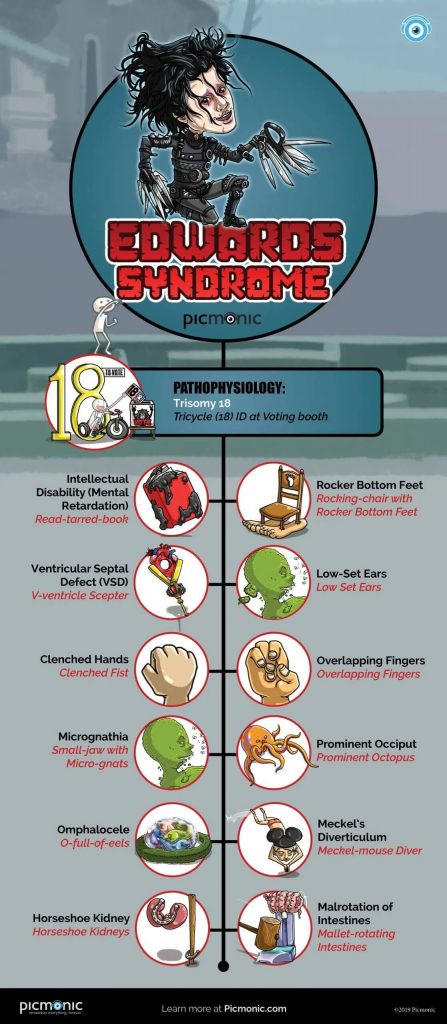A genetic syndrome due to the presence of a complete or partial extra copy of chromosome 18.

Some topics you will learn in this infographic:
Edwards syndrome: the second most common autosomal trisomy observed in live births, and is due to the presence of all, or part of an extra copy of chromosome 18. The major phenotypic features include rocker bottom feet, micrognathia, low set ears, clenched hands with overlapping fingers and a prominent occiput.
Ventricular septal defect: a congenital heart defect that enables blood to flow between the left and right ventricle. VSDs are common in children with Edwards syndrome. Other congenital heart defects may occur like PDA, ASD, and ToF. However, VSD is most common.
Meckel’s diverticulum: a common gastrointestinal defect associated with Edwards syndrome. This is a vestigial remnant of the vitelline duct, and is described as a slight bulge in the small intestine.
Malrotation of the intestine: a congenital anatomical anomaly that results from an abnormal rotation of the gut as it returns to the abdominal cavity during embryogenesis. Occurance of this anomaly is believed to be due to hereditary factors, or an underlying genetic disorder, such as Edwards syndrome.
To learn more, get started with a free Picmonic account.













